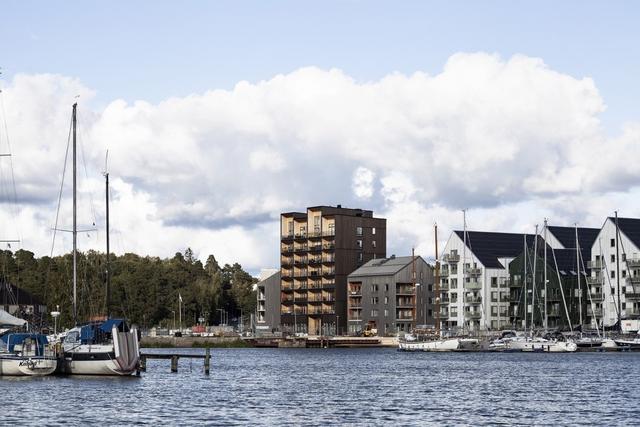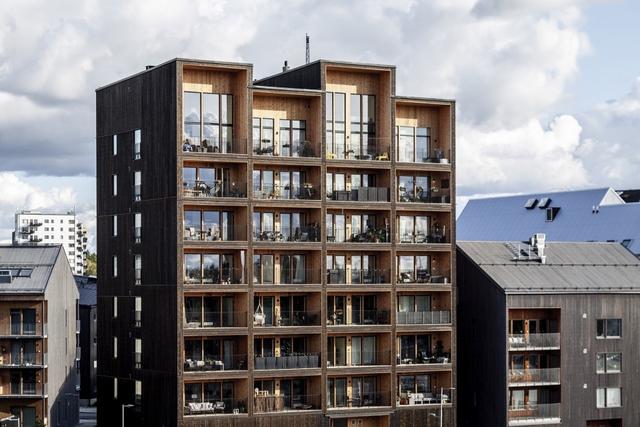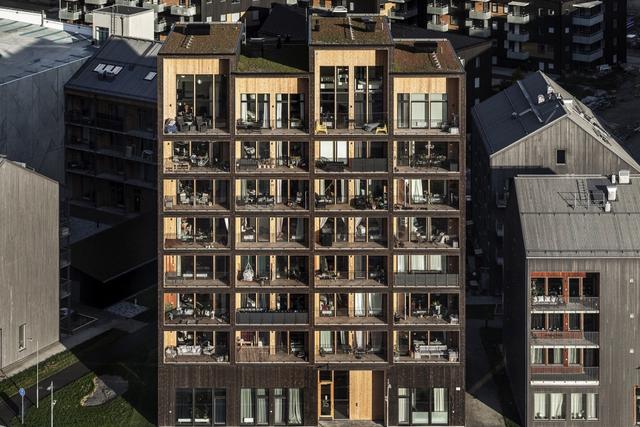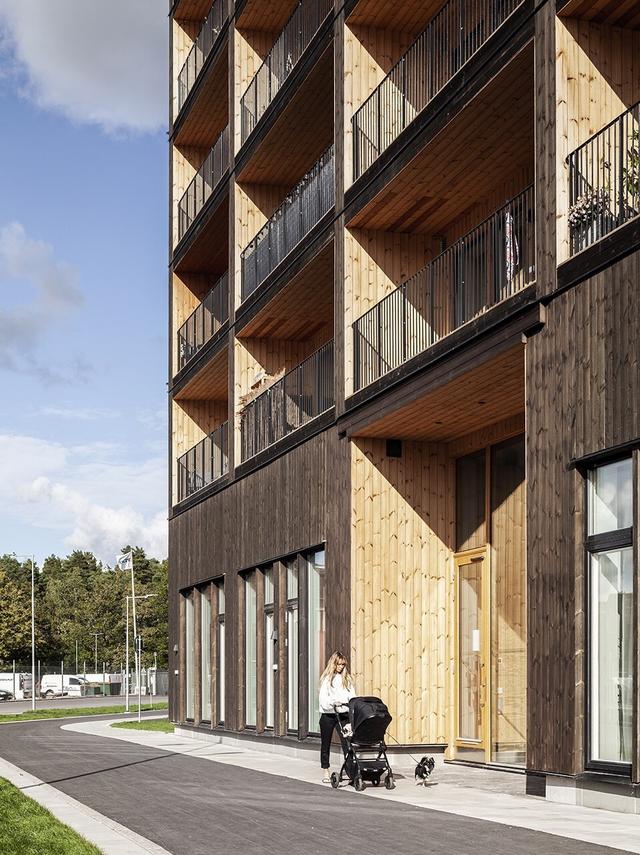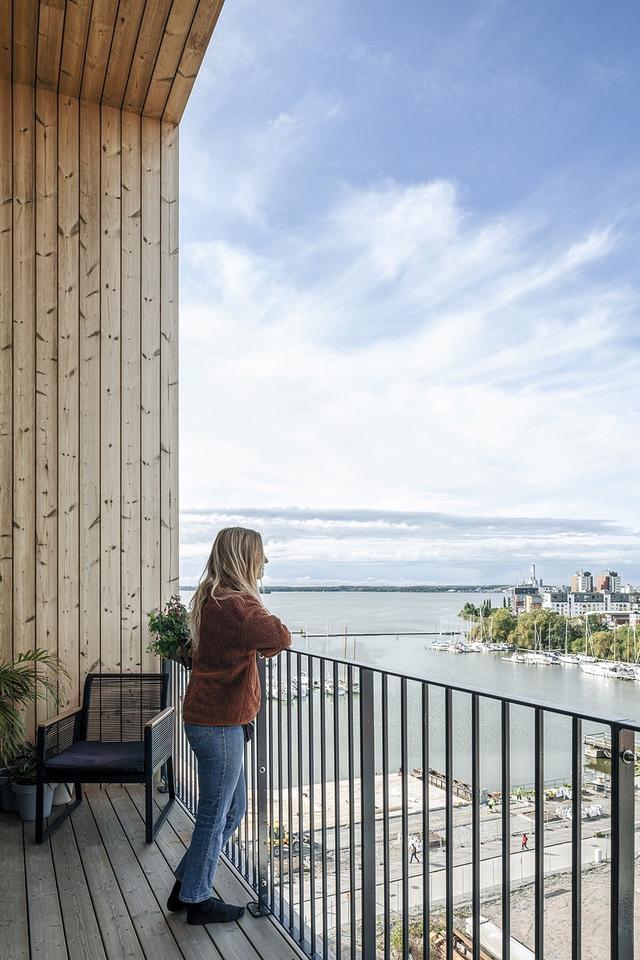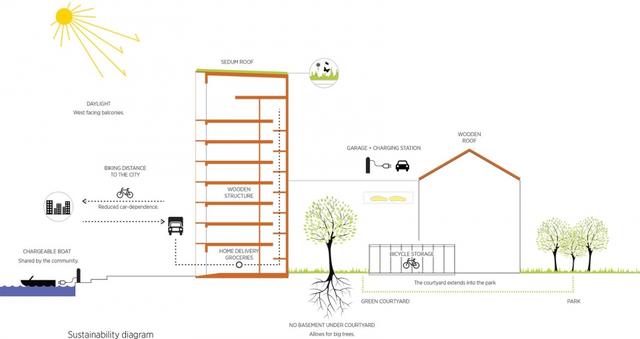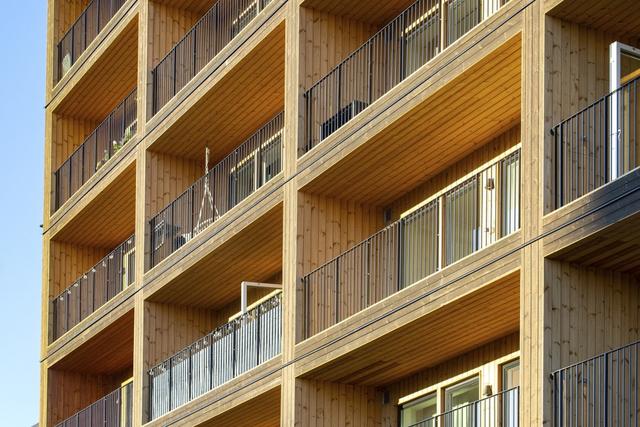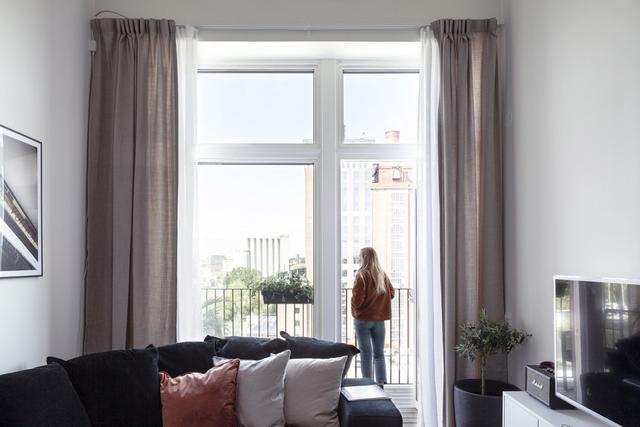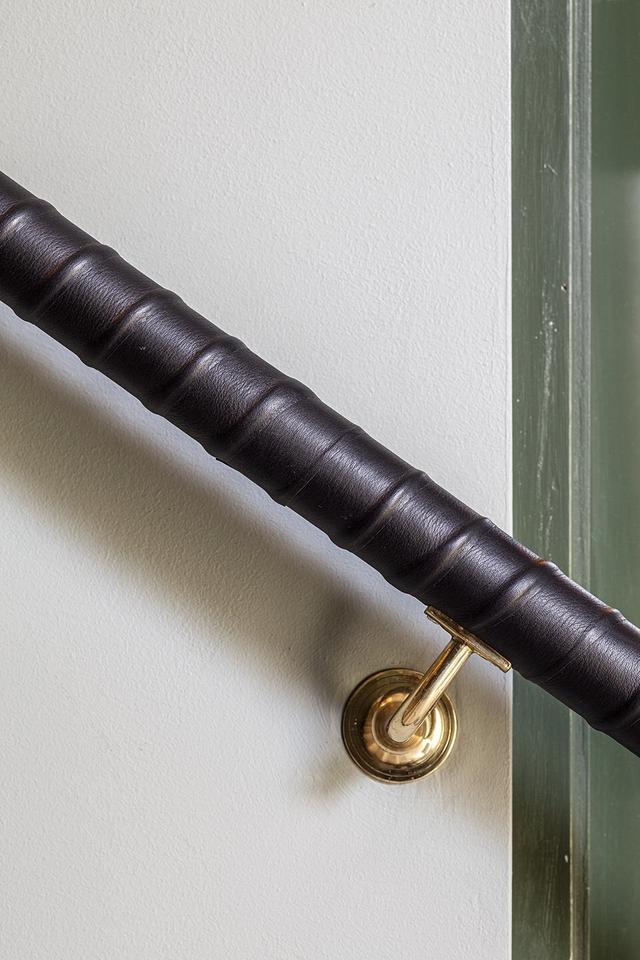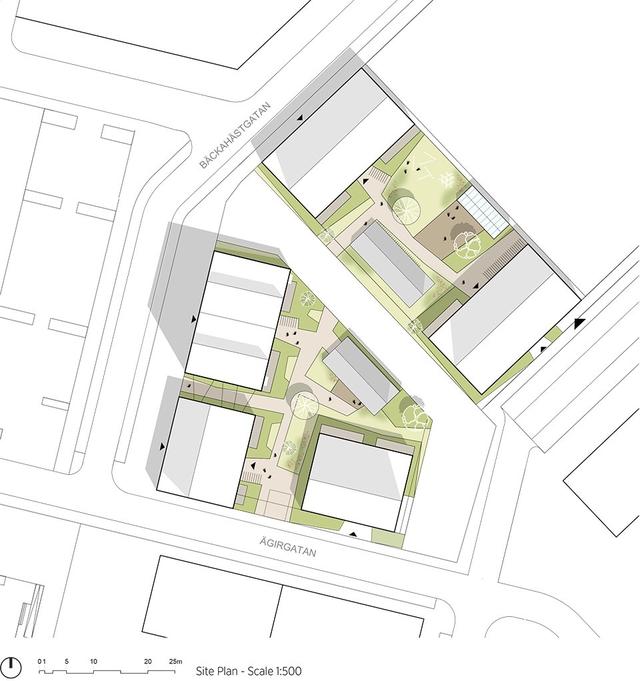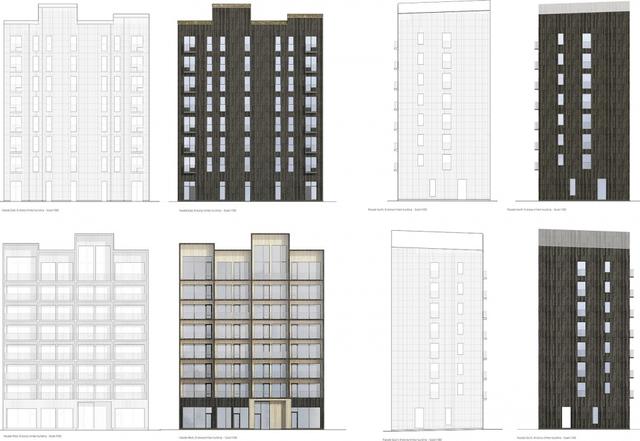由C.F. Møller Architects設計建造的瑞典最高木材建築迎來了它的第一批住客。該建築由實木材料建成,位于距離斯德哥爾摩市僅一小時車程的韋斯特羅斯(Västerås)。作爲該地區地標性建築,此建築將成爲未來可持續建築的標准。
C.F. Møller Architects is behind Sweden’s tallest timber building, which is now accepting its first tenants. The building is made of solid timber, and is situated in Västerås, an hour from Stockholm, as a landmark for the area and a benchmark for a sustainable future.
▼項目概覽,overview © Nikolaj Jakobsen
瑞典最高的木構建築 | Sweden’s tallest timber building
該住宅建築位于韋斯特羅斯的Kajstaden區,距離斯德哥爾摩市有一個小時車程,享有美蘭湖(Lake Mälaren)的美麗景色。Kajstaden住宅樓樓高8層,建築一樓擁有加高的層高,建築頂樓則爲雙層複式。建築物的所有結構,包括牆體,橫梁,陽台,電梯及樓梯間等均由正交層板膠合木(CLT)建成。該建築的建造由Martinsons, Bjerking 和 Consto AB合作完成,開發商爲Slättö Förvaltning。
▼瑞典現有最高的木構建築, currently Sweden’s tallest solid-timber building © Nikolaj Jakobsen
The building is situated in the Kajstaden district of Västerås, an hour’s drive from Stockholm, with beautiful views of Lake Mälaren. Kajstaden Tower is 8.5 storeys high, with an elevated ground floor and a double height top floor. All parts of the building, i.e. walls, beams, balconies, lifts and stairwells, are made of cross-laminated timber. The building was developed in close collaboration with Martinsons, Bjerking and Consto AB, with Slättö Förvaltning as the client.
▼住宅立面,頂樓雙層複式,double height top floor © Nikolaj Jakobsen
▼木質陽台,balcony made of timber © Nikolaj Jakobsen
C.F. Møller Architects 的可持續性工程師Rob Marsh 說到:“木材技術爲建造的每個環節都賦予了生物循環方向的新價值,對于實現基于生物的循環經濟至關重要。在建築物的整個生命周期中,用實木代替混凝土可降低總計550噸的二氧化碳排放量。”
“Wood technology facilitates a value-adding lifecycle perspective in all stages of construction and is crucial to the goal of a bio-based circular economy. The total carbon-dioxide savings from use of solid wood instead of concrete are estimated at 550 tonnes of CO2 over the building’s life,” says Rob Marsh, sustainability manager at C.F. Møller Architects
▼可持續性策略,sustainable strategy © C.F. Moller Architects
提升木構建築影響力 | Increased focus on building with timber
C.F. Møller Architects設計的住宅屬于北歐木構高層建築系統的一部分,該系統旨在傳播如何將木材用于建築建造及木材可持續性特征的有關知識。該計劃由丹麥技術學院副主任Peter Fynholm主持。“目前,我們比以往任何時候都更加關注木構建築。盡管北歐乃至世界範圍內都在廣泛使用木材建造公寓建築,但木材仍是很難被選做高層建築的建造材料。很可惜,在建築行業這樣會對氣候産生 巨大影響的行業中,可再生資源的利用潛力尚未得到很好的開發。” Peter Fynholm說到。
Peter補充道:“然而,使行業使用木材並了解其所帶來的新機遇,並不是一件容易的事情。因此,從例如位于韋斯特羅斯的Kajstaden住宅項目中吸取經驗,變得至關重要。我們建立北歐木構高層建築系統的初衷之一即促進這類經驗交流。”
▼規整的木制結構,timber structure © Nikolaj Jakobsen
He continues: “It’s not, however, an easy task getting the industry to adopt and understand the new opportunities that timber presents. It’s therefore crucial that we learn from our experiences, e.g. what we’ve learnt from Kajstaden in Västerås. We can thereby continue to build on our experiences. One of our reasons for establishing the Nordic Network for Tall Wood Buildings is to facilitate this exchange of experiences,” says Peder Fynholm.
▼木構建築建造細節,construction detail. © C.F. Moller Architects
▼建築室內,木構建築也有利于室內氣候的營造,爲居住者帶來更好的生活環境。Interior view, buildings made of timber also have a positive effect on the indoor climate and the people living in the buildings. © Nikolaj Jakobsen
▼住宅平面,master plan © C.F. Moller Architects
▼住宅立面,axonometric drawing © C.F. Moller Architects
▼建築立面,elevation drawing © C.F. Moller Architects
